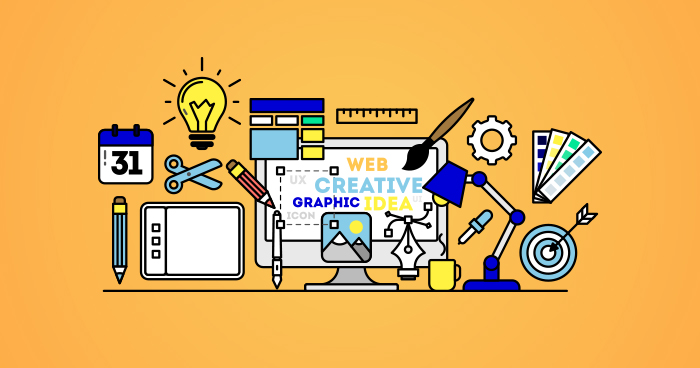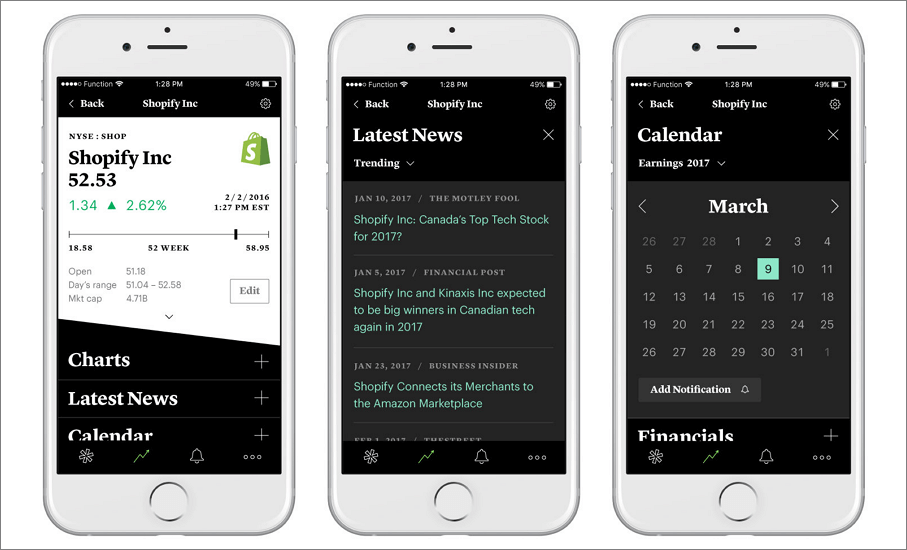
Prototypes allow you to test out new ideas before your product goes live. You can also see user reactions to the features that you design. While you don't need to go out and have a fully functional prototype right away, having a high-fidelity version on hand will help you to make better decisions early in the process.
A prototyping process involves several steps and a lot of information gathering. Clear understanding of the client’s goals is the best way to start. Once you know the goals of your client, you will be able to choose the prototyping approach that is most appropriate for you. This could be either paper or digital, or both.

To create a successful UI/UX design, it is important to choose the right type of prototyping. Knowing your target audience is key to determining the platforms that your product will be available. A website created for a small screen could have different requirements than a desktop version. To allow elements to adjust to screen sizes, liquid layouts may be a good option. If so, make sure you choose a color scheme with good contrast for those who are visually impaired.
It's not difficult to get the best out of a prototype, but it requires creativity and knowledge about what you are testing. Perhaps you want to incorporate the most recent UI/UX trends into the next prototype. Some examples include color, fonts, and animations.
It is crucial to design and implement a UI/UX feature that makes your product stand out. Using the appropriate type of interactive prototype will demonstrate to your stakeholders how your product will work, and give them a chance to test it out first-hand.
Although a prototype is possible in any size, it is crucial to ensure that the product meets all requirements. There are many levels to fidelity. They vary depending on the visual design, content, interactivity, and other factors. Increased fidelity means your prototype will be more attractive and interactive.

The most practical and straightforward prototype is, for the most part the one with most functionality. A click-through prototype could be used to display navigational links. You can also add a search bar to retrieve data from your prototype.
Interactive prototypes are also available to give you an idea of how users will interact. You might create an accordion or dropdown menu. Alternatively, you might decide to add parallax scrolling to your website to make it more engaging.
Prototypes are great at revealing hidden usability problems that you would never find in the real thing. Perhaps your pet sitting application doesn't have an easy way to save your favoritesitters. You can make your pet sitting software fun and intuitive for clients as well as yourself by taking advantage of this design element.
FAQ
How much do web developers make?
The hourly rate for a website you create yourself is $60-$80. However, if you wish to charge more, you can become an independent contractor. The hourly rate could be anywhere from $150 to $200
What is responsive web design?
Responsive Web Design (RWD), is an approach to designing responsive websites. Content will display correctly on all devices, such as smartphones, tablets, laptops, tablets, and desktop computers. This allows users the ability to view a website simultaneously on different devices and still have access to other features like navigation menus, buttons, and so forth. RWD aims to ensure that every user who views a site is able to view it on any screen size.
A website that sells primarily through eCommerce would be an example of this. You want your customers to be able to purchase products from your store, even if they are viewing it on a phone.
A responsive site will adapt to the device used to view it. Your laptop will view the website exactly as a normal desktop site. It will be different if the page is viewed from your phone.
This allows you create a website that looks great on any device.
How do you create a free website.
This will depend on the type and purpose of your website. Are you trying to sell products online, create a blog or build a portfolio of websites?
You can make an essential website using only HTML and CSS (a combination of HyperText Markup Language and Cascading Style Sheets). It is possible to make a basic website with HTML and CSS. However, many web developers recommend using a WYSIWYG editor, such as Frontpage or Dreamweaver.
You might consider hiring a freelance designer if you don’t know how to design websites. They will help you design a website that suits your specific needs.
Freelancers can charge a flat fee or an hourly rate. It all depends on how much work they do in a set timeframe.
Some companies charge between $50 and $100 per hour. Larger projects will usually attract higher rates.
A lot of freelance websites offer job listings. You could search there first before contacting potential developers directly.
How do I choose the right domain name?
A good domain name is vital. It is essential to have a unique domain name. People will not be able find you when they search your product.
Your domain name should be concise, memorable, unique, relevant, and easy to remember. It is ideal to have something that people can type into their browser.
Here are some tips to help you choose the right domain name.
* Use keywords related to your niche.
* Avoid using hyphens (-), numbers and symbols.
* Don't use.net or.org domains.
* Don't use words that have been used before.
* Avoid generic terms like domain or website.
* Make sure it's available.
What technical skills do I need to design and construct my site?
No. All you need is an understanding of HTML and CSS. You can easily find tutorials online that teach both HTML and CSS.
What HTML and CSS are available to help me build my website?
Yes! If you've followed the steps, you should now be able create your website.
Now that you are familiar with how to create a website's structure, you will also need to be familiar with HTML and CSS programming.
HTML stands for HyperText Markup Language. Think of it like writing a recipe for a dish. You would list ingredients, directions, etc. HTML is a way to tell a computer which parts are bold, underlined, italicized or linked to other parts of the document. It is the language of documents.
CSS stands for Cascading Stylesheets. You can think of CSS as a style sheet for recipes. Instead of listing out each ingredient and instruction, you write down general rules for things like font sizes, colors, spacing, and more.
HTML tells a browser how to format a webpage; CSS tells a browser how to do it.
If you don't understand either of those terms, don't fret. Follow these steps to make beautiful websites.
Statistics
- When choosing your website color scheme, a general rule is to limit yourself to three shades: one primary color (60% of the mix), one secondary color (30%), and one accent color (10%). (wix.com)
- In fact, according to Color Matters, a signature color can boost brand recognition by 80%. There's a lot of psychology behind people's perception of color, so it's important to understand how it's used with your industry. (websitebuilderexpert.com)
- It's estimated that chatbots could reduce this by 30%. Gone are the days when chatbots were mere gimmicks – now, they're becoming ever more essential to customer-facing services. (websitebuilderexpert.com)
- The average website user will read about 20% of the text on any given page, so it's crucial to entice them with an appropriate vibe. (websitebuilderexpert.com)
- It's estimated that in 2022, over 2.14 billion people will purchase goods and services online. (wix.com)
External Links
How To
How do you become a web developer
Websites are more than just HTML code. It's an interactive platform that allows you to communicate with users and deliver valuable content.
A website is more than a medium for delivering information; it is a portal to your business. Your website should enable customers to find what they want quickly and efficiently, as well as show how you want them interacted with your company.
The best websites let visitors do exactly what it says on the tin: find what they are looking for, then go.
You'll have to learn technical skills and design aesthetics to achieve this goal. You will need to understand HTML5 coding principles and CSS3 styling. Also, you'll need to keep up with the latest developments and JavaScript.
A variety of tools are required, including InDesign, Photoshop, Illustrator and Fireworks. These tools enable designers to create website graphics and layouts. The style guide includes everything you need, from fonts, colors, and layout.
You can learn more about web design by looking at articles, enrolling in college courses or reading online courses.
It might take months or years to complete your degree program, but once you've earned a degree, you'll be ready to enter the workforce.
Don't forget to practice! It will be easier to create great websites the more you learn how to design.